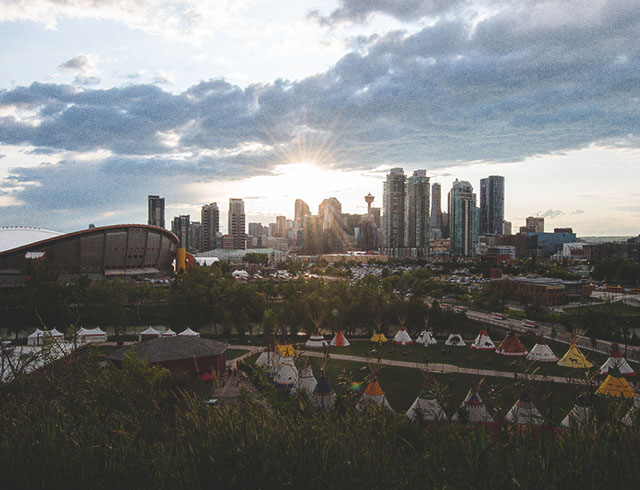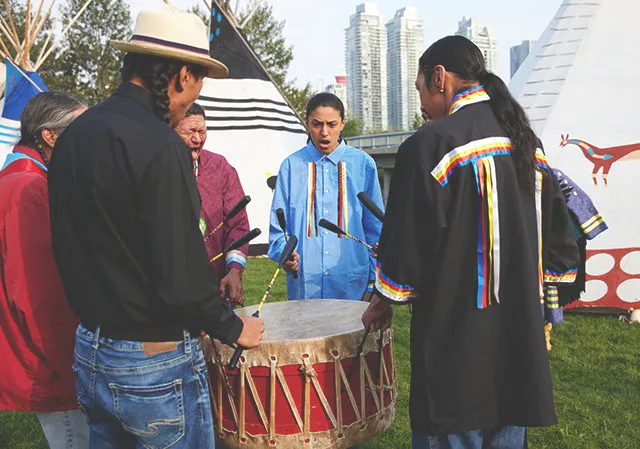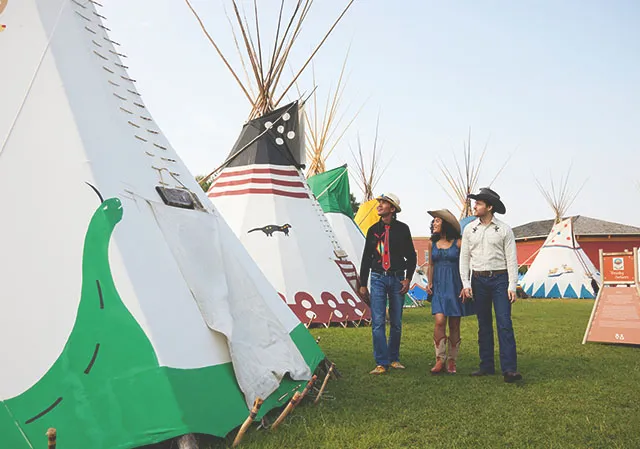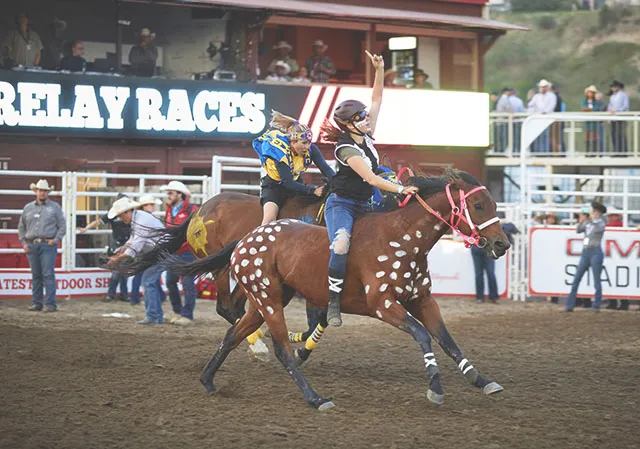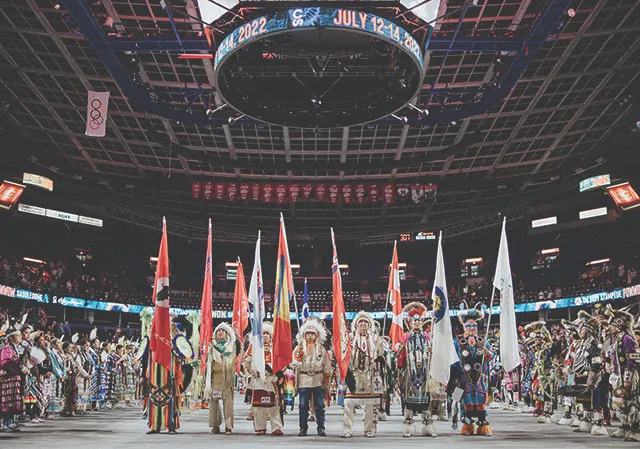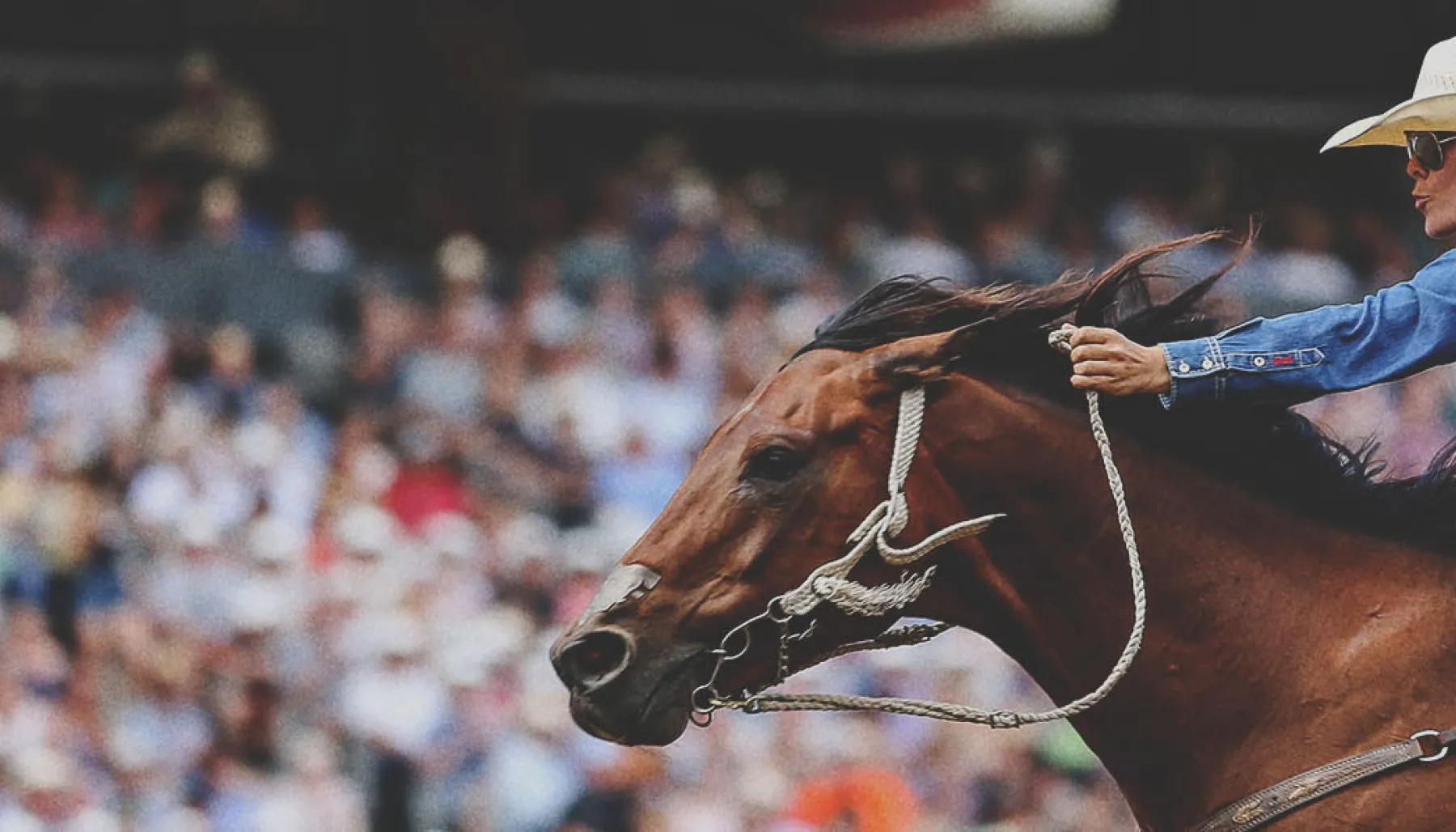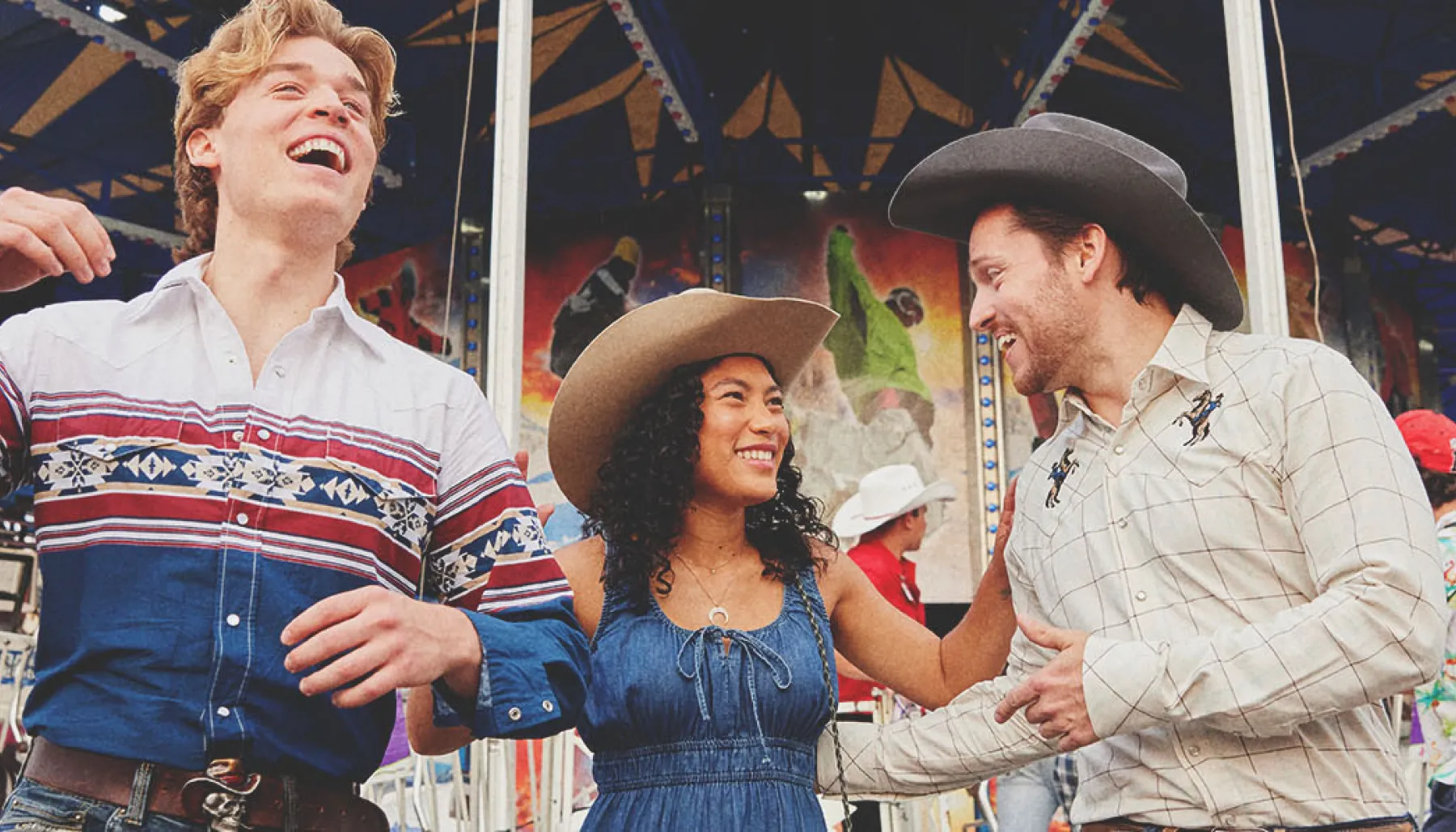History
The land where Elbow River Camp sits has always been used as a gathering place for the First Nations. Yet, in 1912 when Guy Weadick and the other organizers of the first Stampede wanted to include First Nations people, cultures, and traditions the federal legislation made it illegal for them to wear traditional clothing, speak their own languages, or have their own ceremonies. Stampede became a safe space for First Nations people to preserve and celebrate their cultures.
In the early days of Stampede, surrounding Nations would camp in and around the city before eventually coming together on Stampede Park. This tradition continues each year during the Calgary Stampede at Elbow River Camp.
Interpretive Program
It’s the personal connections that make Elbow River Camp such a meaningful experience for most visitors. First Nations members of Treaty 7 are available throughout Elbow River Camp to share their knowledge about their cultures and traditions. The Interpreters also demonstrate traditional outdoor cooking, as they make dried meat, tea, Saskatoon berry soup, and bannock.
Interpreters can be easily identified by their red vests.
For a special experience, visit Stampede early and watch a traditional flag raising. Each morning at Elbow River Camp, flags for each First Nation of Treaty 7, the province of Alberta, and Canada are raised to the sound of drumming and singing.
Bannock Booth
Bannock is a type of bread that’s been popular with First Nations across North America for hundreds of years.
While exploring Elbow River Camp, make sure to stop at the Bannock Booth for some deep-fried bannock that’s best served with Saskatoon berry jam.
Hand Games
The Hand Games Competition is an experience you won’t want to miss! Watch as two teams try to outsmart each other by hiding sticks between team members before guessing the sticks’ location. This cultural game is a favourite with First Nations throughout North America. Traditional songs and drums are played throughout the game, making for a truly engaging experience.
Hand Games are played at specific times during Stampede, so make sure to check the schedule.

